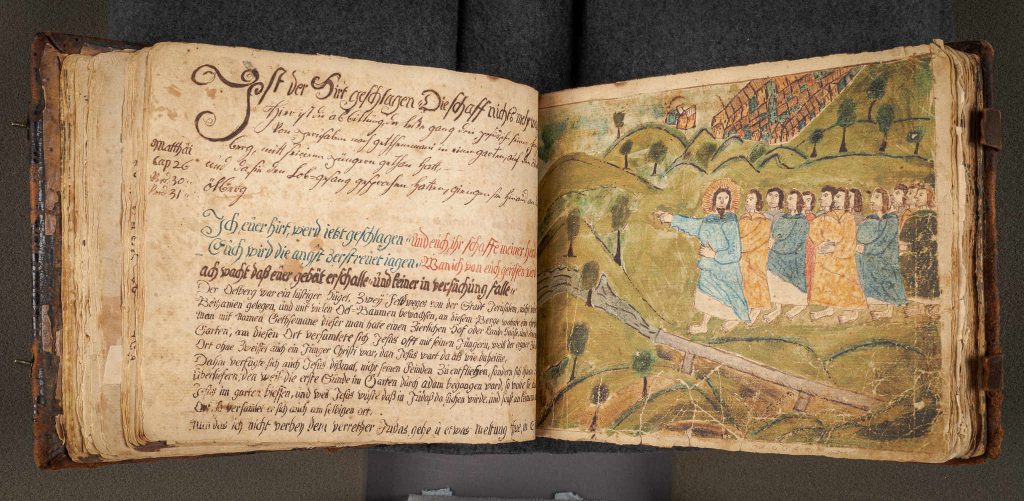RRCHNM Partners with Winterthur Museum to Present Pennsylvania Illuminated Manuscript
RRCHNM is happy to announce a partnership with the Winterthur Museum, Garden, and Library to present the history of a fascinating and unique eighteenth-century American manuscript.

Ludwig Denig was an eighteenth-century shoemaker and apothecary living in colonial and revolutionary Pennsylvania. Denig was a Pietist who drew on the devotional and biblical spirituality of the Lutheran and Dutch Reformed churches. He created a devotional text—an illuminated manuscript—by mixing an array of Christian elements with his own creativity. He copied passages from the Gospels in German with devotional reflections on the Passion. He painted watercolor scenes from the Passion that combined the stories of the Gospels with scenes from his own experience, including the brutal violence against the Conestoga Indians in Lancaster, Pennsylvania, and his own experiences of warfare in the Revolutionary War. And he added Christian hymns to his watercolors and biblical texts. This manuscript combines a number of devotional, theological and artistic traditions, but that combination created a manuscript and work of art that is unique to early America.
The Winterthur received the Denig Illuminated Manuscript by gift from the Schwartz Foundation. Now Stephanie Delamaire, Winterthur’s curator of fine art, is leading a project funded by the Getty Foundation to digitize the Denig’s devotional text. In addition to photographing this fascinating work of art, Delamaire is leading scholars who will investigate the art historical influences on Denig, recreate the sounds of the hymns through musicology and professional recordings, and create a set of essays interpreting the text and setting it in its historical context.
RRCHNM is pleased the Winterthur has chosen to partner with us to create the website for the project. The website will present the complex, multimedia scholarship that Delamaire and her colleagues are creating to understand the Denig manuscript. The website will be created by Jason Heppler, Lincoln Mullen, and John Turner at RRCHNM and George Mason University. This collaboration will build on RRCHNM’s strengths in presenting history online, as well as the emphasis of our scholars on art history and the history of America religion.
For more information about the Denig manuscript project and similar projects, you can subscribe to the “American Religion @ RRCHNM newsletter.”
